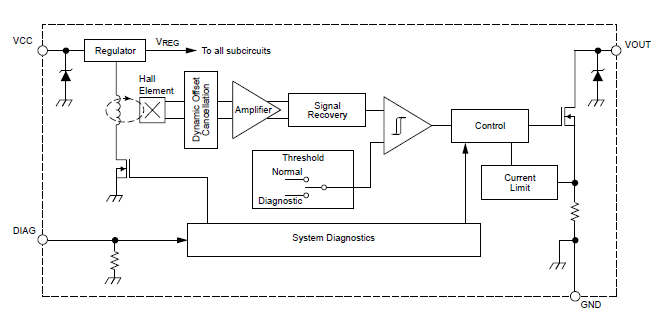The A1160 provides enhanced functional safety with its externally enabled diagnostic function, which exercises the entire magnetic and electrical signal path for comprehensive self-testing.
Product Details
Product Details
Top Features
- AEC-Q100 automotive qualified
- Unipolar switchpoints
- Externally enabled diagnostics feature
- Diagnostics feature exercises the entire magnetic and electrical signal path within the IC
- Resistant to physical stress
- Superior temperature stability through advanced chopper stabilization techniques
- Output short-circuit protection
- Internal regulator enables operation from unregulated supplies
- Reverse-battery protection
- Solid-state reliability
- Small surface-mount package
Target Application
- Shift Selector
- Closure Systems
- Seat Position
- Throttle Position
- HV-Powertrain
Part Number Specifications and Availability
Design Tools
Technical Documentation

Application Note
Handling, Storage, and Shelf Life of Semiconductor Devices

Application Note
Allegro Hall-Effect Sensor ICs

Application Note
Allegro Microsystems - Chemical Exposure of Devices

Guide
Hall-Effect IC Applications Guide

Guide
Guidelines for Designing Subassemblies Using Hall-Effect Devices

Technical Article
Magnetic Sensor ICs Offer Integrated Diagnostics for ASIL Compliance

Technical Article

